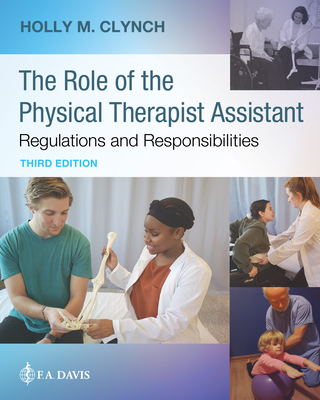
Clynch, Holly M.
product information
description
ations, and responsibilities of the PTA?What relationship, relevance, and role modeling are required in the PT-PTA relationship? Be prepared for your new role as a PTA. This is the perfect introduction to the history of the Physical Therapist Assistant and their responsibilities today. The 3rd Edition of this groundbreaking text delves into the ever-expanding role of the PTA in the clinical setting as well as the regulations that govern the PTA's scope of work. Inside, you'll find the knowledge you need to grow as a PTA...from your first semester through your last. By understanding the importance of this information and how it affects you, your colleagues, and your patients, you'll be empowered in your new role and in your professional relationships.
- Updated! Information on APTA positions, bylaws and publications that impact the role and utilization of the PTA, including the new Core Values document, PTA voting rights in the House of Delegates, the soon-to-be published revisions to the PTA Direction and Supervision position, and updates to the APTA's online version of the Guide to Physical Therapist Practice.
- Expanded! More detailed content/questions related to the biopsychosocial model of health and the ICF model of patient categorization
- New! Coverage of the ramifications of racism on patients, providers, and institutions to promote discussions of this challenging topic
- Updated! Information on state and federal payment policies and regulations in an ever-changing payment environment and their impact on the delivery of services
- The PTA's role as the preferred extender of PT care and the importance of building strong relationships with PTs
- The transition from clinical to the real-world of professional practice in the chapter, Beginning your Career, Post-Graduation Advanced Learning and Skill Development, perfect for capstone courses
- The American Physical Therapy Association's (APTA) policies and positions as well as the World Health Organization's (WHO) International Classification of Functioning, Disability, and Health (ICF) model.
- Role delineation, teamwork, professionalism, and leadership development
- "For Reflection" boxes and "Review" and "Application" sections to encourage students to practice their soft skills
- A workbook-like design with perforated, tear-out pages.
member goods
No member items were found under this heading.
Return Policy
All sales are final
Shipping
No special shipping considerations available.
Shipping fees determined at checkout.







